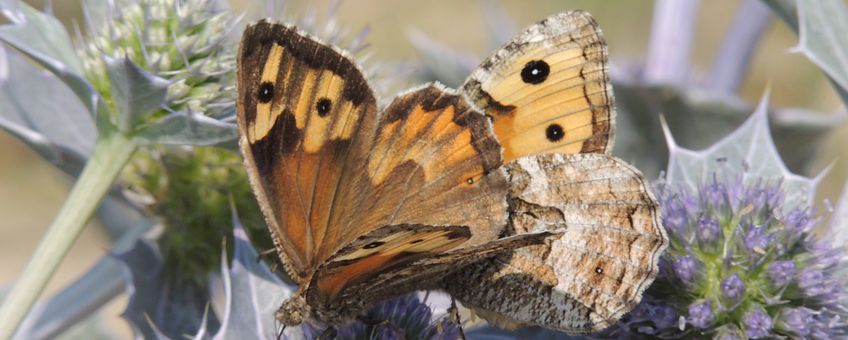
The state of butterflies and dragonflies in the Netherlands in 2017
CBS - Statistics Netherlands, Dutch Butterfly ConservationEach year De Vlinderstichting and CBS summarize their findings in their monitoring report. The butterfly scheme started in 1990, the dragonfly scheme in 1998.

Although the report is primarily written in Dutch, the species names (there is a list of names in English at the end of the report) and graphs paint a clear picture also for international readers.
The chapters and figures mentioned in the summary below refer to those in the report (pdf; 4.6 MB).
The good and the bad
2017 can be characterised by species either having a very good year (e.g. the White admiral (Limenitis camilla) and the Common ringlet (Coenonympha tullia)) or a very bad year (e.g. the Grayling (Hipparchia semele), and the Alcon blue (Phengaris alcon)). As always, the Meadow brown (Maniola jurtina) was the most abundant species.
The same trends can be seen for dragonflies. The peatbog specialist Northern emerald (Somatochlora arctica) had an exceptionally good year. Common hawker (Aeshna viridis) and Irish damsel (Coenagrion lunulatum) were doing poorly and their trend is rather worrying.
40% decline of butterflies on transects

The number of butterfly transects and plots has more or less stabilized around 900 sites (Figure 1). Five transects had more than 25 species (Figure 2).
Notably, the total number of butterflies on transects declined by 40% (Figure 9).
Chapter 7 presents the trends of all native butterflies as graphs. An overview of the trends of butterflies since 1992 indicates that 11 species show a significant increase, 13 others are stable and 23 species are declining (Figure 11).
Abundance and distribution of dragonflies
The number of dragonfly transects has increased to 509 sites. 196 are general routes where all species are counted and 313 are species specific routes (Figure 6). This is partly because of an extra effort to assess the abundance of the Green hawker in agricultural areas.
The Blue-tailed damselfly (Ischnura elegans) was the most abundant species.
Chapter 8 shows both population and distribution indices for most species. In terms of abundance, 18 species show a significant increase, 7 species are stable and 9 others are declining. In terms of distribution 39 species show a significant increase, 8 species are stable and 9 others are declining (Table 2, Figure 6).

The first moth trends
For the first time, trends for moths are presented. Three species of diurnal moths increase in abundance. Additionally, a monitoring network for nocturnal moths has started and is introduced in the report.
Methods
Butterflies and dragonflies are counted using a line-transect method. Butterfly transects are visited every week, dragonfly transects once every fortnight. The length of the transects is variable and depends on habitat quality and availability. In addition, single species transects are exclusively counted for a specific threatened butterfly or dragonfly. Population indices were calculated using the computer program TRIM (Trends and Indices for Monitoring Schemes). This program was developed by CBS for the analysis of time series of counts with missing observations. The butterfly indices are calculated using a weighting procedure, the dragonfly indices are not weighted yet. The reference value of the year 1992 is set to 100. For dragonflies, distribution indices are calculated in addition to population indices.
Text: De Vlinderstichting, CBS
Photos: Toon Verbruggen (lead photo: Grayling (Hipparchia semele)); OhWeh; L.B. Tettenborn
